opens in a new window The Geek Feminist Revolution is a collection of essays on on feminism, geek culture, and more by double Hugo Award-winning essayist and fantasy novelist Kameron Hurley.
The Geek Feminist Revolution is a collection of essays on on feminism, geek culture, and more by double Hugo Award-winning essayist and fantasy novelist Kameron Hurley.
Unapologetically outspoken, Hurley has contributed essays to The Atlantic, Locus, Tor.com, and others on the rise of women in genre, her passion for SF/F, and the diversification of publishing.
What’s So Scary about Strong Female Protagonists, Anyway?
There’s a woman in the alley you should be afraid of, but you aren’t, and you aren’t sure why. You know her: She is the woman on the cover of those urban fantasy novels.
She’s Buffy the Vampire Slayer. She’s the woman on that show—you know, every show—who wears the tight leather pants and the bright lipstick and maybe she carries a gun or knows how to throw a punch.
But if you ran into her in an alley instead of a police station, you would most likely mistake her for a lost partygoer or perhaps a sex worker, and therein lies the real source of the trope she is meant to evoke to an assumed young male audience.
She is not meant to be scary, though she carries a gun and wears more leather than a man in a biker gang. She has tattoos, but not too many. She wears makeup, but not too much. She is neither too masculine nor too feminine. The coveted audience for much of our television programming remains the young (generally white) male, ages eighteen to thirty- four. It’s why so many shows on the Syfy channel seem to want to find ways to disrobe their heroines for no good reason. And it’s why the woman in the alley, the woman with the leather and tattoos (but not too much) is not actually scary. She is not meant to be any more dangerous than a carnival fun ride. She’s meant to be a catalyst for an adventure, for a young man’s sexual awakening—available, but not clingy. She is the woman you fuck, not the woman you marry.
It was not until I realized this that I understood why so many of the “strong female protagonists” I saw trotted out in many films and televisions shows and even a lot of fiction weren’t the sort of strong female heroines I wanted to watch. These women were not created for me.
Worse, by parading this specific type of “strong woman” around as being the only type of “strong woman” there is, we’re telling a generation of women that the only way to be taken seriously is to pick up a gun and get a tattoo. Guns and tattoos are fi ne things, but they are less a path to power than a head for mathematics and political reform. Our society may respect the fist, but it is the one who controls the person with the stick, not the person with the stick, who has the most power in our culture.
Yet there continues to be a proliferation of these women in much of the science fiction landscape—from books to film to television. The “post Buffy” urban fantasy heroine has become a bit of a cliché, in no small part because the covers that portray her have all started to look alike. Hot pants, tattoos, over-the-shoulder glances; these are largely faceless heroines, women whose skin the assumed female reader can neatly slip into. They are witty and know how to use a weapon, but their “scariness” ends there. If the leather pants weren’t a clue, the sexy poses should have tipped you off. These women are not meant to actually be threatening. Even if you’re a vampire and she kills vampires, there’s just as good a chance she’ll sleep with you as shoot you. That’s the conflict, after all. But it’s a conflict that isn’t all that scary. It’s just sexual tension wrapped up in another form. It’s tough women as fetish, not as real people. The first time somebody wrote a Buffy rip- off was about as good as the first time somebody wrote a Tolkien rip-off, and then everything started to fall apart from there. It’s not that there aren’t plenty of good knock- offs, but at the end of the day, there are far more knock- offs than there are reimaginings. Or evolutions.
Unfortunately, once a marketing movement gets going, it becomes very difficult to kick your book out of it. I know one author who only tangentially included a fiery woman with a sword in their book, but lo, right there on the cover was a woman with a sword in skintight clothes with over-the-shoulder pose.
I don’t begrudge urban fantasy as a genre. It can certainly be a lot of fun for folks, though it’s not generally my cup of tea. What bothers me about it is that it seems to reaffirm something I’ve suspected for a long time:
Women aren’t allowed to be scary. Not really scary. Not in a nonsexualized, nonfetishized way.
Why is it all hot pants and back tattoos? Why the symbols of toughness instead of actual dark alley terror? Why do we celebrate “girl power” but sneer at “ women power”?
I’d argue this is because women can be and are incredibly scary, and even if that’s something powerful that we’d like to read about, we have to dress it up as something else. Something more relatable. Safer. Something that doesn’t offend our loved ones and ensures that we are still loved and respected and not beaten up or harassed or made fun of for appreciating stories about women who can scare the crap out of the guy in the alley.
Urban fantasy is a great avenue for exploring women’s real-world negotiations with power, but its heroines struggle with the same syrupy- sticky half- power that their real world counter parts angst over. I want to be tough but lovable. I want to be cool but acceptable. I want power but not all the stigma that comes with power. I want to be special, but not so special that nobody loves me. I am equal, right, so why do I still feel like I have to be married or partnered or buried in children in order to be a real person? And if I’m so equal and so good at killing demons, why am I still making less money than guys? And if I’m so equal why do I still get terrified by every guy I see in a dark alley?
These are all great questions, and fun to explore, but they’re not questions I’m interested in. I’m interested in what happens when women are no longer afraid of the guy in the alley. I’m interested in what happens if it’s the woman in the alley who incites terror. Could that world exist? What would it look like? I want to unpack and reimagine what a truly free, powerful female heroine would look like. I want a Conan for women, who can chop up monsters and fearlessly bed whom she wishes without fear of repercussions or dirty conscience. Who is she? What world does she live in?
And, most important of all . . . why don’t we see more of her?
Are we just as afraid to write about her as we are to imagine her in that dark alley waiting, gun drawn, without pity or sympathy for man or beast or vampire or child, to blow off our head and hit the bar on the way home before slipping into blissful, dreamless sleep—the sleep of the unfettered, the conscienceless, the powerful? Her power, the real power, threatens our established social order. Women with real power can use it against men. Women with real power are not there to be looked at. They are there to act.
She is not the Strong Female Protagonist. She is the Scary Female Protagonist, and we don’t see enough of her.
Copyright © 2016 by Kameron Hurley
Pre-order The Geek Feminist Revolution today: Amazon | Barnes & Noble | Books-a-Million | iBooks | Indiebound | Powell’s

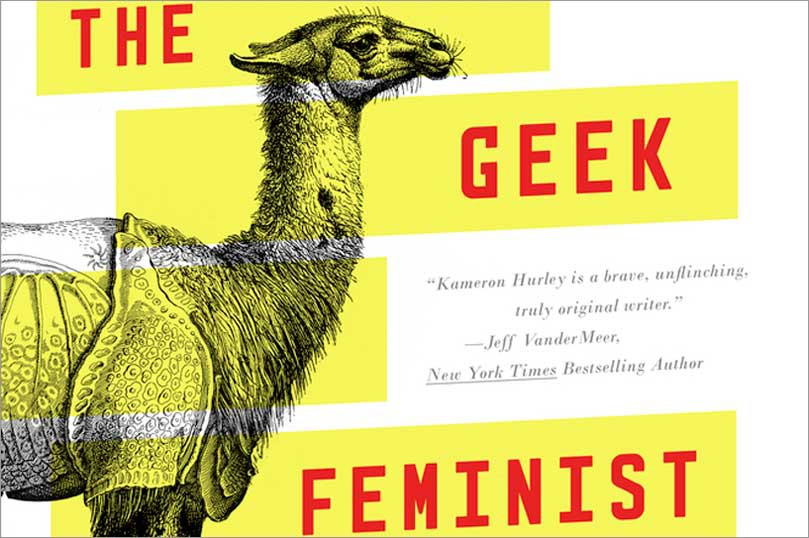
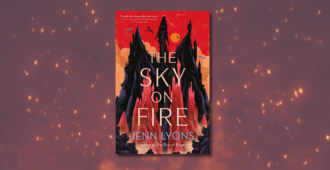
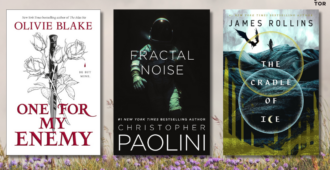

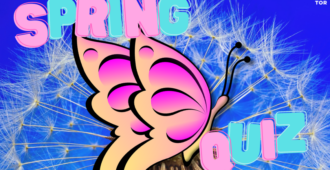
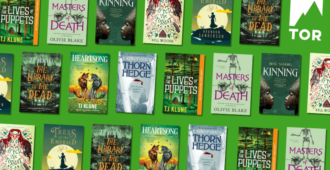
Thank you! While I love Buffy, Anita Blake, and many other great female protagonists, your essay is right on the hot button of why they frustrate me at times. I used to LARP. Cosplay seems to have evolved from that, but again it is all about the sexy, hyper-fems costumes and makeup. My most progressive minded friends believe that if they dress like this they are striking a blow for equality. Since the cosplayers who get media attention and fans mostly look like they could be covers for ‘Playgeek’- it’s a little depressing to me. Thanks again! A joy to hear this expressed so clearly.
Thank you, Kameron. My stars, that struck deep, as it needed to. You crystallized my dissatisfaction with UF and PNR as they stand now, and why I’ve shied away from reading more than the Wiki entry on many of them. Kudos to your description of the right kind of powerful women. I love *those* stories. I’ve tried to write them…but they keep getting Buffy’d by other would-be helpful voices.
I see Ms. Hurley’s point. During the rare times I am in an actual bookstore and not buying a book I specifically want on Amazon (which is 99.99% of the time, now), my eyes just glaze over the covers with female lead characters who are exactly as she described: leather-clad and holding a crossbow or a sword and standing in front of a cityscape.
The purpose of all fiction — especially, I would argue, speculative fiction — is to expand and create, not pigeon-hole itself into tropes and stereotypes.
Having said that, an author needs to also remember that their main character should be relatable to the reading audience. By this, I don’t mean likable, necessarily, but not so alien that there’s no common ground with the average person. Otherwise, you don’t have a badass, just a horror movie monster.
That’s exactly why I couldn’t get through “God’s War”. Really, I just hated it. I wanted to like it, but I didn’t. Yes, Nyx is the kind of “Scary Woman” Ms. Hurley is talking about here. But, she was also, to me, as boring as heck. I also didn’t respect the way she slept around.